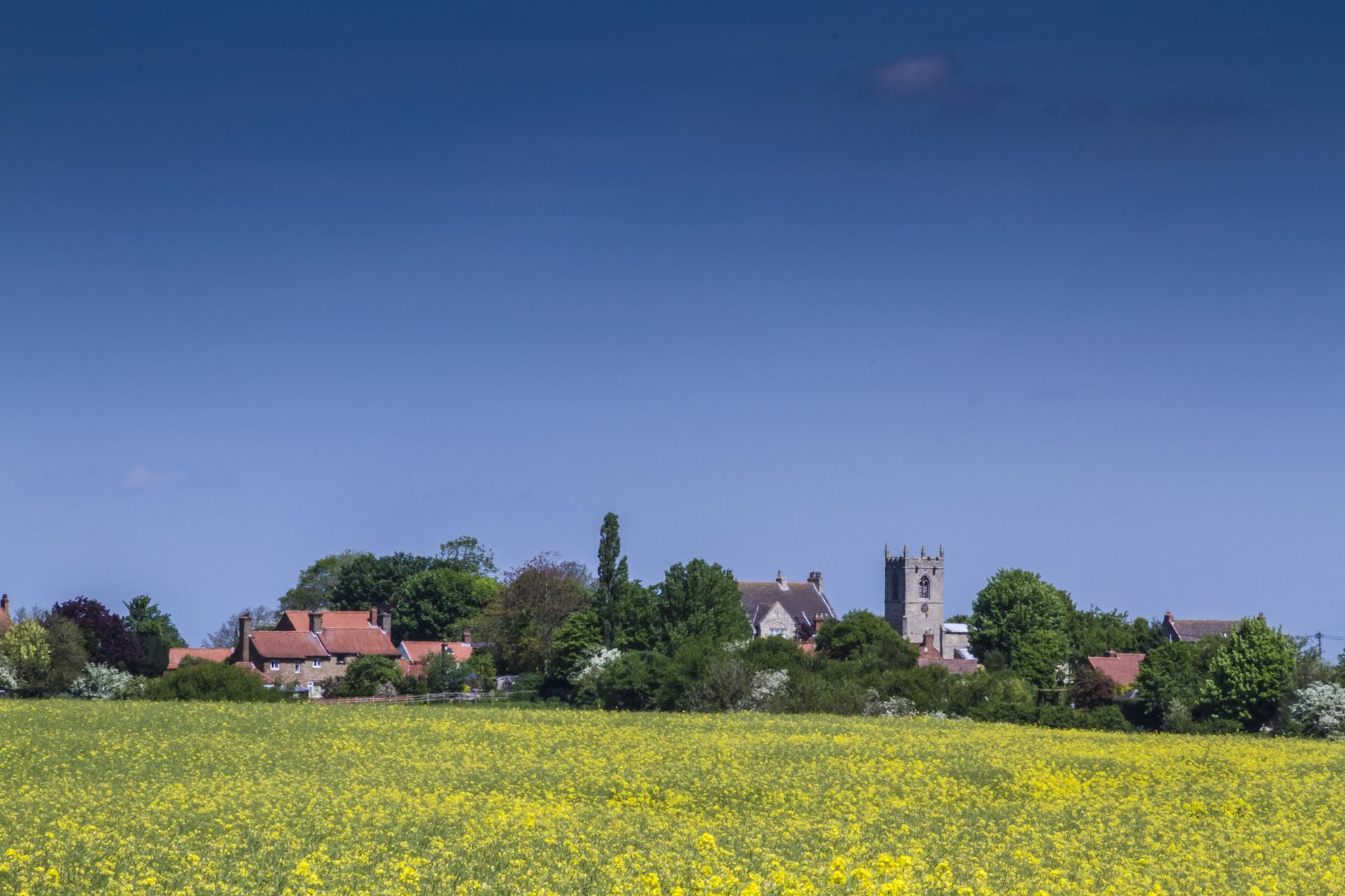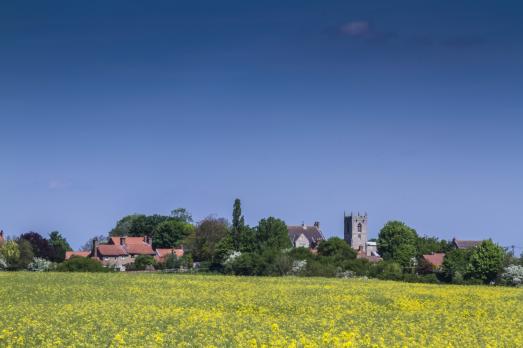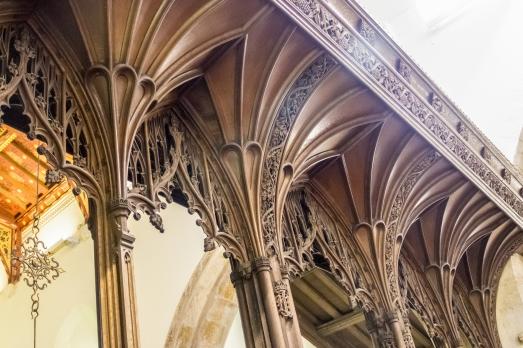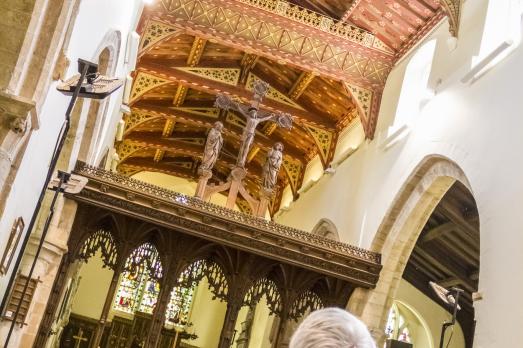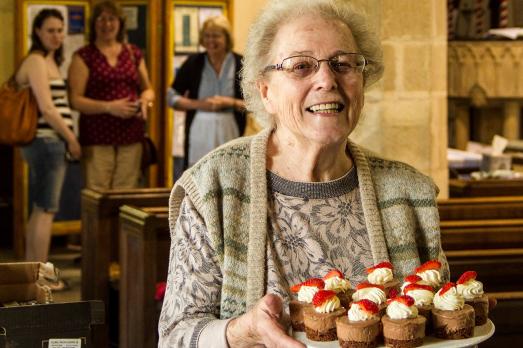The tower was built in the 10th century to a preexisting wooden church (burnt down by the Danes) and is built in Jurassic limestone quarried from the Lincoln Edge. The south and west faces of the tower contain stones showing charred red brown colour, evidence of the torching by the Danes. There are many treasure to be found outside and within St Laurence's. These include the, now blocked up, Anglo Saxon doorway above the tower and the font which was made by George Green of Gainsborough in the 1849 restoration. The north aisle dates from the 11th century and was enlarged in the 14th century. The Lady Chapel dates from the 13th century and is dedicated to the Blessed Virgin Mary.
The ceiling, by GF Bodley (1884), contains the 'M' motif, representing the Magnificat. The chancel has a rood screen made of oak, the base is the original rood screen which was taken down in 1565 and sold to Thomas Broxholme for 16 shillings. It was later discovered at the Vicarage and erected by Bodley in 1884. The choir contains choir stalls with misericords. There is an Easter Sepulchre between the north door and the east wall and this has been reused for the recessed tomb of William de Gare 1277-1290, Archdeacon of Lincoln. The organ was installed in 1884 and the organ case was decorated by Bodley with Latin verses from the Psalms. The lancet window in the West tower wall is a 13th century window with the stained glass being inserted in 1878 by C Kempe (1838-1907) showing John the Baptist, the prophet Isaiah and King David. The two north aisle windows are Perpendicular, 14th century, and have clear quarries with emblems, in colour, representing the Passion of Christ; nails, rope, dice, lance with sponge on reed and the scourges.
Corringham, is also home to a few famous residents: Charles Waterton; there were two important places of influence in Corringham; The Old Hall and Somerby Hall. The Old Hall which is on medieval foundations belonged to the Waterton family.They were Catholics and as a result of their religion lost their estates in the reign of Henry VIII. Sir Robert Waterton, Lord of the Manor was knighted on 14 of November 1501 on the marriage of Prince Arthur and Katherine of Aragon. He died 26 February 1540. One of his descendants was implicated in the Gunpowder Plot in 1605. Another descendant was Charles Waterton 1782-1865, English Naturalist, Explorer of South America and Environmentalist. He lived at Walton Hall the grounds of which he made into the world's first nature reserve and wild park. One claim to fame was that he invented the first bird nesting boxes. Herbert Rollet; grocer cum artist born in June 1872 and died in 1932. He was born at Huckerby into a farming family. He attended the Queen Elizabeth Grammar School, Gainsborough, now the Hickman Hill Hotel. When he left school he became an apprenticed grocer in Brigg. In 1898 this apprenticed grocer opened his first shop in Grimsby. He took up his palette drawn by the Lincolnshire landscape and was self taught. He was to exhibit in Paris and at the Royal Academy. He appreciated Lincolnshire and said 'one gets such wonderful sky effects'. He died on 8th December 1932 aged 60 and was interred in the churchyard at St Nicholas Great Coates, where he had retired. Rollett was rediscovered in 2005 with the publication of a book by Allen Smith. Gowin Knight; was baptized 10 September 1713 at St Laurence. He was the son of Robert Knight, vicar of that place and also a virtuoso who collected coins and medals. Gowin grew up to become a scientist and inventor whose work in the field of magnetization led to significant improvements in the magnetic compass. In 1744 he exhibited powerful bar magnets before the Royal Society of London, proving that he had discovered a greatly improved method of magnetizing steel. Knight then turned his attention to the compasses used by mariners. He found the needles to be crudely magnetized and inaccurate and suggested the now common rhomboidal shape and an improved suspension. After experimentation by the Royal Navy, his new compass became standard.

